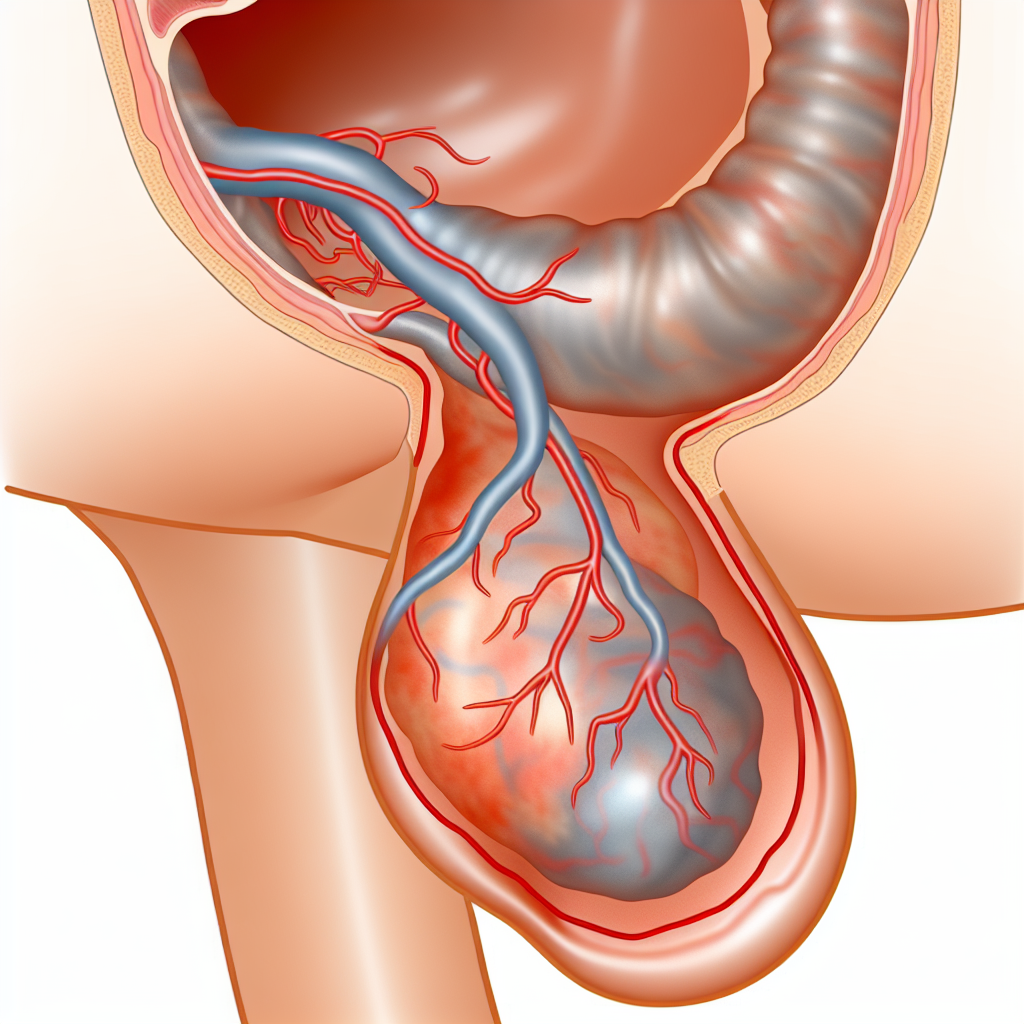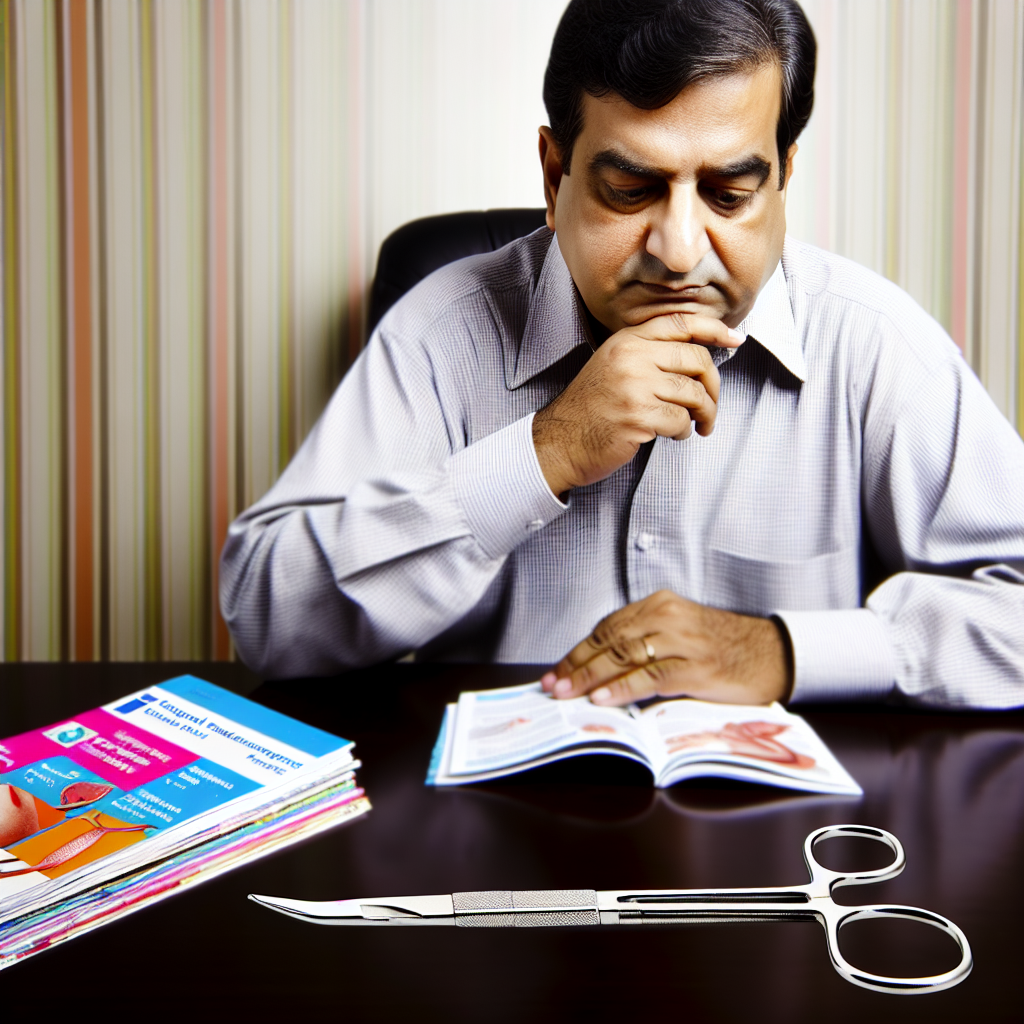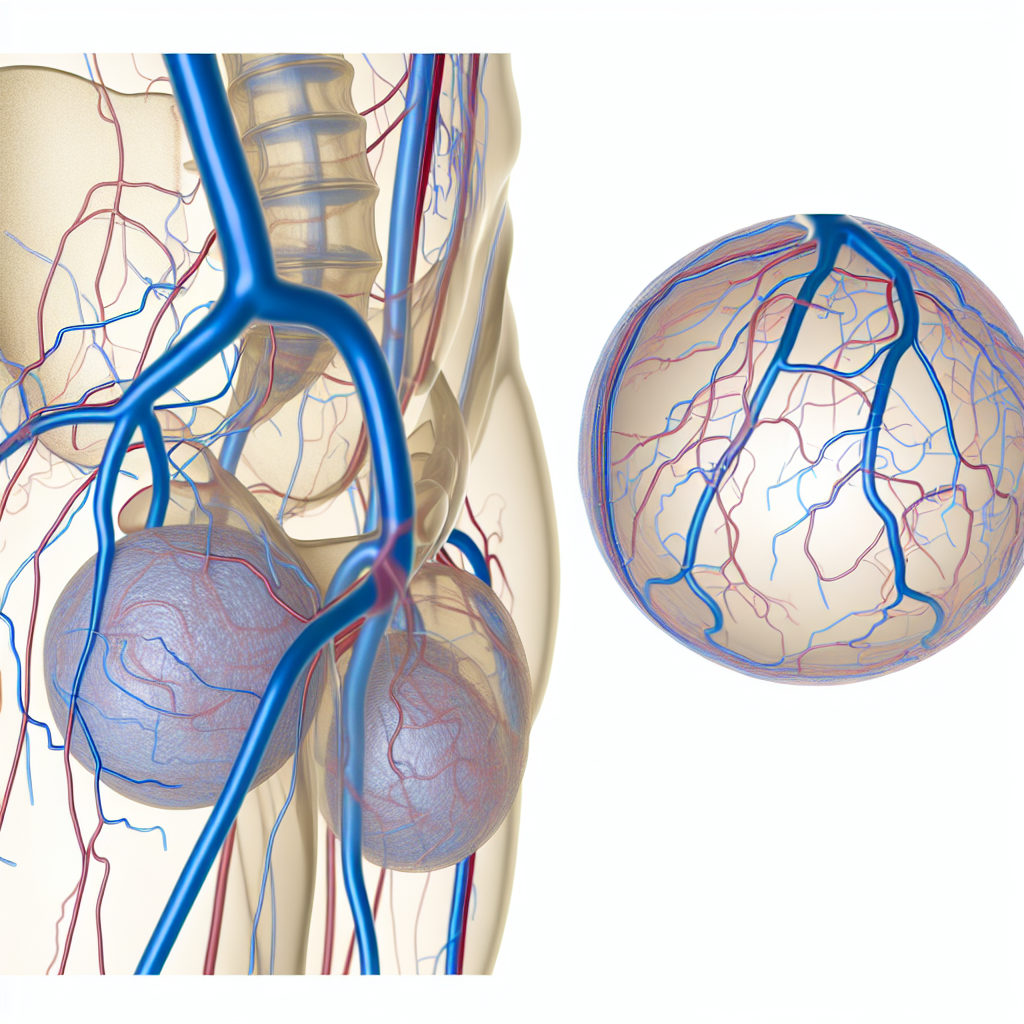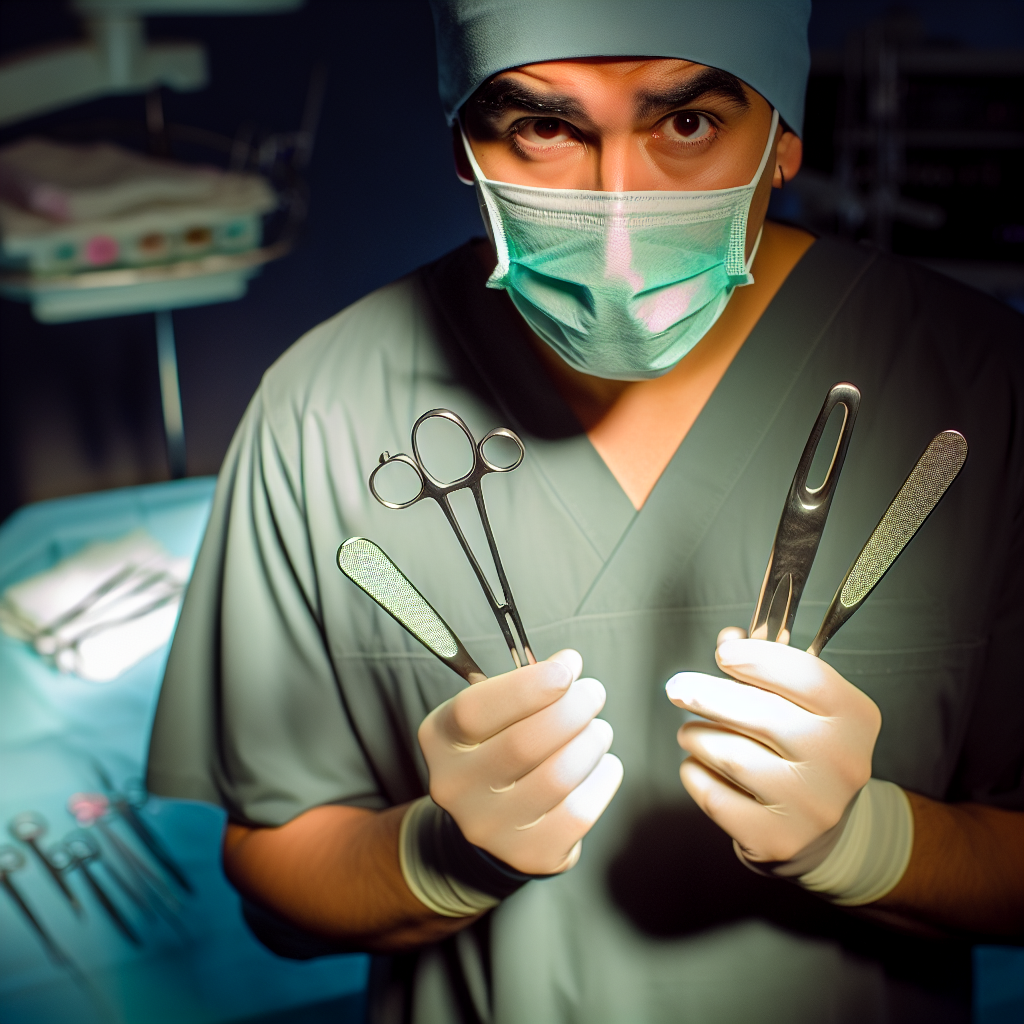Varicocele is a condition where veins become enlarged and twisted in the spermatic cord, causing swelling and discomfort. Treatment options include surgery and non-surgical methods, depending on severity. Lifestyle changes can also help manage symptoms but do not replace medical treatment. Varicocele surgery options include open surgery, laparoscopic surgery, and embolization, with each having its benefits and drawbacks. Consulting with a healthcare provider is essential to determine the best course of action.
Varicocele is a common condition that affects around 15% of men. It is a condition where the veins in the scrotum become enlarged and twisted, resulting in a build-up of blood. This can cause discomfort, pain, and infertility in some cases. In this article, we will discuss the causes and symptoms of varicocele, as well as the various treatment options available. We will also explore the role of lifestyle changes in managing symptoms and the implications of testicular varicocele causes for treatment. Additionally, we will delve into the pros, cons, and recovery expectations of varicocele surgery options.
1. Understanding Varicocele: Causes and Symptoms

Varicocele is a medical condition that occurs when the veins within the spermatic cord, which supplies blood to the testicles, become enlarged and twisted. This leads to a backflow of blood, causing the veins to swell and become varicose.
The exact cause of varicocele is still unknown, but it is thought to occur due to a malfunctioning of the valves within the veins. This can cause blood to pool and create pressure, leading to the development of varicocele. Additionally, varicocele is more common in men aged 15-25 and is believed to be caused by a combination of genetic and environmental factors.
The most common symptom of varicocele is a painless swelling or lump in the scrotum. This swelling may be more noticeable when standing or exerting pressure. However, not all men with varicocele experience symptoms, and it is often discovered during a routine physical exam or fertility evaluation.
Varicocele can also cause testicular atrophy, which is a decrease in the size of the affected testicle. This can lead to fertility problems, as the testicle may not produce enough healthy sperm. Other symptoms of varicocele may include a feeling of heaviness or discomfort in the scrotum, especially after prolonged standing or physical activity.
If left untreated, varicocele can lead to complications such as infertility, testicular damage, and chronic pain. Therefore, it is important to seek medical attention if you suspect you have varicocele.
Treatment options for varicocele include surgery and non-surgical approaches. Non-surgical options include wearing supportive underwear, taking pain medication, and making lifestyle changes such as avoiding prolonged standing or heavy lifting. Surgery is typically recommended if the varicocele is causing fertility problems or significant discomfort. There are several surgical options available, including open surgery, laparoscopic surgery, and embolization. It is important to discuss the best treatment option with your healthcare provider based on your individual needs and preferences.
In conclusion, varicocele is a common condition that can be caused by a variety of factors. It is important to recognize the symptoms of varicocele and seek medical attention if you suspect you have it. Treatment options include non-surgical approaches and surgery, depending on the severity of the condition and the individual’s needs.
2. Varicocele Treatment Options: Surgery and Non-Surgical Methods

Varicocele Treatment Options: Surgery and Non-Surgical Methods
When it comes to treating varicocele, there are two primary options available: surgery and non-surgical methods. The choice of treatment will depend on the severity of the symptoms, the underlying causes, and the individual’s overall health.
Surgery is often recommended for men with severe or persistent symptoms, as well as those who are experiencing infertility as a result of their varicocele. The most common surgical procedure is a varicocelectomy, which involves tying off or removing the affected veins. This can be done through open surgery or laparoscopy, which is a less invasive option.
While surgery is often effective in treating varicocele, it does come with some risks, including bleeding, infection, and damage to surrounding tissues. Recovery time can also be lengthy, with some men needing to take time off work or avoid strenuous activities for several weeks or even months.
For those who prefer to avoid surgery or have a milder case of varicocele, non-surgical methods may be an option. One such method is embolization, which involves injecting a special substance into the affected vein to block blood flow. This is typically done on an outpatient basis and has a shorter recovery time than surgery.
Other non-surgical options include lifestyle changes, such as avoiding tight clothing or prolonged periods of sitting or standing, and wearing supportive underwear or compression stockings. These measures may help alleviate symptoms and prevent the condition from worsening.
In conclusion, varicocele treatment options include surgery and non-surgical methods. The choice of treatment will depend on the severity of the symptoms and the underlying causes, as well as the individual’s overall health and preferences. Consultation with a healthcare provider is essential to determine the most appropriate course of action.
3. The Role of Lifestyle Changes in Managing Varicocele Symptoms

While surgery is often the recommended treatment for varicocele, lifestyle changes can also play a role in managing symptoms. Here are a few lifestyle changes that may be helpful:
1. Exercise regularly: Regular exercise can improve blood circulation, which may help alleviate some of the discomfort associated with varicocele. However, it’s important to avoid exercises that put excessive strain on the affected area, such as heavy weightlifting or cycling.
2. Wear supportive underwear: Wearing supportive underwear, such as compression shorts, can help reduce the pressure on the affected veins and provide relief from symptoms.
3. Avoid prolonged sitting or standing: Prolonged sitting or standing can worsen varicocele symptoms, so it’s important to take frequent breaks and move around throughout the day.
4. Maintain a healthy weight: Being overweight or obese can put additional strain on the veins in the scrotum, making varicocele symptoms worse. Maintaining a healthy weight through diet and exercise may help alleviate symptoms.
While these lifestyle changes may help manage varicocele symptoms, it’s important to note that they are not a substitute for medical treatment. If you are experiencing symptoms of varicocele, it’s important to speak with your doctor to determine the best course of treatment for your individual needs.
4. Testicular Varicocele Causes and Their Implications for Treatment

Testicular Varicocele Causes and Their Implications for Treatment
Testicular varicocele is a condition that occurs when the veins inside the scrotum become enlarged and dilated. The exact cause of this condition is not yet fully understood, but there are several factors that can contribute to its development.
One of the most common causes of testicular varicocele is the faulty valves inside the veins that are responsible for regulating blood flow. When these valves fail to function properly, blood can pool in the veins, leading to their enlargement. Another possible cause is the compression of veins due to an anatomical abnormality or growth. In some cases, testicular varicocele can also be caused by an obstruction or blockage in the veins, which restricts the flow of blood.
The implications of the underlying causes of testicular varicocele can vary depending on the severity of the condition. In mild cases, lifestyle changes such as wearing supportive underwear or avoiding heavy lifting may be enough to alleviate the symptoms. However, if the cause of the varicocele is a mechanical obstruction or faulty valves, more invasive treatment options may be necessary.
Varicocele surgery options include a variety of procedures that aim to correct the underlying cause of the condition. One of the most common surgical interventions is varicocelectomy, which involves the removal or ligation of the affected veins. This procedure can help to improve blood flow and reduce the size of the varicocele, thereby alleviating symptoms such as pain and discomfort.
In some cases, non-surgical options such as embolization or sclerotherapy may be recommended. These procedures involve the use of a catheter to block or collapse the affected veins, which can help to improve blood flow and reduce the size of the varicocele.
In conclusion, understanding the underlying causes of testicular varicocele is crucial for determining the most appropriate treatment options. While mild cases may be treated with lifestyle changes, more severe cases may require surgical intervention. Varicocele surgery options such as varicocelectomy can be highly effective in alleviating symptoms and improving overall quality of life for those affected by this condition.
5. Varicocele Surgery Options: Pros, Cons, and Recovery Expectations

Varicocele Surgery Options: Pros, Cons, and Recovery Expectations
In some cases, varicocele surgery may be necessary to alleviate symptoms or prevent complications. There are several surgical options available, each with their own pros, cons, and recovery expectations.
1. Open surgery: This traditional surgery involves making a small incision in the groin or abdomen to access and tie off the affected veins. Pros of this surgery include a high success rate and long-term effectiveness. However, it is more invasive and may require a longer recovery time.
2. Laparoscopic surgery: This minimally invasive surgery involves making small incisions and using a camera and specialized instruments to access and tie off the affected veins. Pros of this surgery include a shorter recovery time and less scarring. However, it may not be as effective as open surgery for larger or more complex varicoceles.
3. Embolization: This non-surgical procedure involves using a catheter to block the affected veins with coils or other materials. Pros of this procedure include a shorter recovery time and no incisions. However, it may not be as effective as surgery for larger or more complex varicoceles and there is a risk of recurrence.
It is important to discuss the risks and benefits of each surgical option with your doctor and make an informed decision based on your individual situation. Recovery time and expectations will vary depending on the type of surgery performed, but most patients can expect to return to normal activities within a few weeks.
In conclusion, varicocele surgery may be necessary for some individuals experiencing symptoms or at risk of complications. There are several surgical options available, each with their own pros, cons, and recovery expectations. Consult with your doctor to determine the best course of action for your individual situation.
In conclusion, varicocele is a common condition that can cause discomfort and lead to fertility issues in men. Understanding the causes and symptoms of varicocele is essential in identifying and managing the condition. Treatment options range from non-surgical methods, such as lifestyle changes, to surgery, with each having its pros and cons. It is important to consult with a healthcare professional to determine the best course of treatment for individual cases. With effective treatment, men with varicocele can improve their quality of life and increase their chances of having children.
